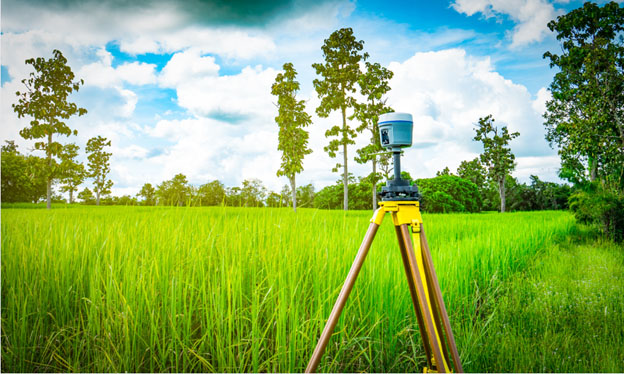 Last week’s economic news included reporting on construction spending, the Federal Reserve’s decision to raise its benchmark interest rate, and weekly readings on mortgage rates and jobless claims.
Last week’s economic news included reporting on construction spending, the Federal Reserve’s decision to raise its benchmark interest rate, and weekly readings on mortgage rates and jobless claims.
Construction Spending Increases in March
The Commerce Department reported that month-to-month construction spending rose by 0.30 percent and year-over-year construction spending increased by $1.83 trillion. Residential construction fell by -0.20 percent in March, which was the tenth consecutive monthly decline in residential construction spending. Non-residential construction spending rose by 0.70 percent in March for the ninth gain in the past 10 months.
Fed Raises Key Interest Rate Range
Federal Reserve policymakers raised the Fed’s key interest rate range by a quarter point to 5.00-5.25 percent at its Federal Open Market Committee meeting held on Tuesday and Wednesday. This was the tenth consecutive rate hike as the Fed continues efforts to control inflation.
Analysts noticed a subtle change in the tone of the Fed’s post-meeting statement and suggested that the less aggressive tone used in the post-meeting statement signaled a softer approach to raising the Fed’s benchmark rate. While some Fed policymakers recently suggested the possibility of a recession, Fed Chair Jerome Powell disagreed: “This is not my own most likely case.” Chair Powell also said that he expected economic growth in 2023 but at a slower pace.
Mortgage Rates Mixed, Jobless Claims Rise
Freddie Mac reported mixed movement of mortgage rates last week as the average rate for 30-year fixed-rate mortgages fell by four basis points to 6.39 percent. The average rate for 15-year fixed-rate mortgages rose by five basis points to 5.76 percent.
Initial jobless claims rose to 242,000 claims filed last week as compared to the prior week’s reading of 229,000 first-time claims filed. Continuing jobless claims fell with 1.81 million claims filed as compared to the prior week’s reading of 1.84 million claims filed.
What’s Ahead
This week’s scheduled economic news includes readings include readings on inflation and consumer sentiment. Weekly readings on mortgage rates and jobless claims will also be published.
 A land survey is an essential tool that is used to determine the exact boundaries of a piece of land or property. It is often required when buying, selling, or dividing land, and is also important for resolving property line disputes.
A land survey is an essential tool that is used to determine the exact boundaries of a piece of land or property. It is often required when buying, selling, or dividing land, and is also important for resolving property line disputes. Passive real estate investing refers to an investment strategy where an individual invests in real estate assets without being actively involved in the management of those assets. In passive real estate investing, an investor typically provides funds for a real estate project, such as a rental property or commercial development, and receives a return on investment based on the performance of that project.
Passive real estate investing refers to an investment strategy where an individual invests in real estate assets without being actively involved in the management of those assets. In passive real estate investing, an investor typically provides funds for a real estate project, such as a rental property or commercial development, and receives a return on investment based on the performance of that project. When it comes to buying or selling a home, working with an experienced real estate agent can be the difference between success and failure. Not only do agents possess access to the Multiple Listing Service (MLS) — a comprehensive database of properties for sale — they also provide invaluable insight into local markets, saving buyers and sellers time by handling many of the tedious tasks associated with transactions.
When it comes to buying or selling a home, working with an experienced real estate agent can be the difference between success and failure. Not only do agents possess access to the Multiple Listing Service (MLS) — a comprehensive database of properties for sale — they also provide invaluable insight into local markets, saving buyers and sellers time by handling many of the tedious tasks associated with transactions.  Are you in the process of selling your home? You probably want to buy a new one right now to ensure you have another house to move into, but what happens if you do not have the cash to buy a home right now? You might need to cash from your current home before you can purchase your next home, but can you really wait to sell your house before buying another one? A bridge loan can help you fix this issue.
Are you in the process of selling your home? You probably want to buy a new one right now to ensure you have another house to move into, but what happens if you do not have the cash to buy a home right now? You might need to cash from your current home before you can purchase your next home, but can you really wait to sell your house before buying another one? A bridge loan can help you fix this issue. Last week’s economic reporting included readings on home prices, sales of new homes, and pending home sales. Monthly and year-over-year readings for inflation were published along with weekly reports on mortgage rates and jobless claims.
Last week’s economic reporting included readings on home prices, sales of new homes, and pending home sales. Monthly and year-over-year readings for inflation were published along with weekly reports on mortgage rates and jobless claims.